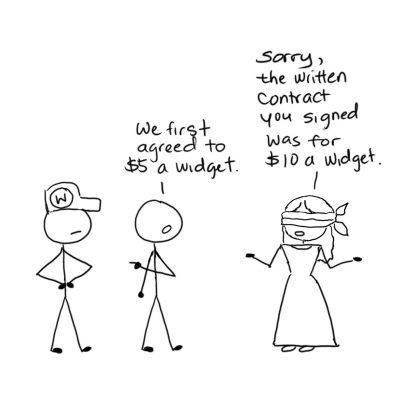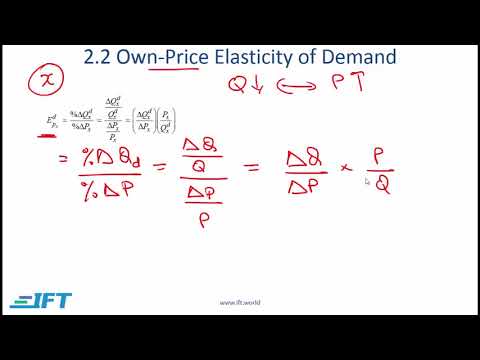1 Define shareholder wealth. Explain how it is measured. 2. What are the differences between shareholder wealth maximization and profit maximization? If a firm chooses to pursue the objective of shar
Contents
What do these terms mean to the financial aspect of a firm? Are these two terms in conflict or congruence with each other? Shareholders’ equity is a term used in accounting a stockholders current wealth in the firm is calculated by and finance. It refers to the net income and capital that a company retains from year to year. At the end of the year the net income is dumped into shareholders’ equity.

With the increase in leverage, lenders being to worry about the repayment of interest and principal and security available to them. Simultaneously, when the equity holders will not much bother when the debt levels of the company are lower. WACC is defined as the weighted average of the cost of various sources of finance.
thoughts on “Wealth Maximization”
It considers the time value of money and risk and uncertainty factors while considering discount rates. Increase in debt level will cause to increase the cost of debt. The increased debt will increase the financial risk of the firm and expectations of the equity holders will be more. Thus the average cost of capital will remain constant for all levels of leverage. A change in proportion of various sources of finance cannot alter the weighted average cost of capital and as such, the value of firm remains unaltered for all degrees of leverage.

Growth-focused companies often prioritize boosting sales over capturing profits because rapidly growing revenues can indicate strong future earnings potential. Shareholder value, in the form of a rising stock price, can be increased as a result of strong sales performance. A company that focuses on maximizing shareholder value is more likely to generate attractive returns for investors. Executives of publicly traded companies are expected to prioritize shareholders’ interests by making decisions that increase shareholder value. Shareholder value is the value delivered by a company to investors who own shares in the company. Shareholder value is created when a company’s management team makes business decisions that enable the company to increase its earnings, dividends, or share price.
Increase earnings per share
The equity holders of a geared firm expect a return equal to the expected return from the identical ungeared firm, plus a premium that is directly proportional to the level of gearing. The rise in cost of equity due to increased level of gearing will precisely offset the low cost debt, at all levels of gearing. The cost of capital is interdependent on the degree of leverage. The lowest component in the cost of capital relates to the fixed interest bearing investments. Traditionally, optimal capital structure is assumed at a point where weighted average cost of capital is minimum.
Financial plan should be compatible with retaining control. Existing managements are allergic to the very idea of loosing control over the affairs. The risk of loss of control increases with the increase in the proportion of equity to total capital and vice versa. The equity shares (face value Rs. 10) of the company have a current market value of Rs. 40. This is expected to fall to Rs. 32 if debts exceeding Rs. 50 lakhs are raised.
Treasury stock is an organization’s own inventory that it has reacquired from shareholders. Companies can reissue treasury shares back to stockholders when corporations need to raise cash. Retained earnings are the earnings a business keeps to spend money on itself as a substitute of issuing cash dividends to stockholders; these additionally cause stockholders’ fairness to rise. An increase in stockholders’ fairness on the balance sheet together with a lower in the dividend fee points to greater retained earnings. A company’s retained earnings embrace cash reserves and cash spent to amass new belongings in addition to cash it uses to repay debt, each of which instantly increases stockholders’ fairness.

Liabilities include any money that the company is required to pay to creditors, like bank loans, dividends payable, and accounts payable. It is commonly understood that corporate directors and management have a duty to maximize shareholder value, especially for publicly traded companies. However, legal rulings suggest that this common wisdom is, in fact, a practical myth—there is actually no legal duty to maximize profits in the management of a corporation.
In accounting terminology, any asset that the company has held for fewer than 12 months is a current asset. Retained earnings are a firm’s cumulative net earnings or profit after accounting for dividends. Total liabilities consist of current liabilities and long-term liabilities. Current liabilities are debts that are due for repayment within one year, such as accounts payable and taxes payable. Long-term liabilities are obligations that are due for repayment in periods beyond one year, including bonds payable, leases, and pension obligations. Anderson is CPA, doctor of accounting, and an accounting and finance professor who has been working in the accounting and finance industries for more than 20 years.
WACC is undoubtedly an important tool in determining optimal capital structure. To minimise the value of the firm as well as the market value of the stock, the firm should strive to minimise WACC. Thus considerable weight is placed on WACC for achieving the ultimate objective of increasing the stockholders worth by choosing an appropriate capital mix.
Shareholder value is the value given to stockholders in a company based on the firm’s ability to sustain and grow profits over time. Explain how to calculate the price-earnings ratio and describe how it is used in analysis of a company’s financial condition and performance. Evaluate the rational for wealth maximization as a goal for a firm. Investments with positive Economic Value Added increase shareholder value, and those with negative EVA reduce shareholders’ value. “Wealth maximization, which translates into maximizing the price of the firm’s common stock.”- Brigham & Ehrhardt. Wealth maximization means maximizing the net present value or wealth of a course of action to shareholders.
These are the individuals, businesses, and institutions that have an ownership interest in a company after purchasing shares of that company’s stock. Even if your business is a one-person shop, you are the shareholder based on your invested interest in your company. Because shareholders own the firm, they are entitled to the profits of the firm.
The total market value of the firm and its cost of capital are independent of its capital structure. The total market value of a firm is given by capitalising the expected stream of operating earnings at a discount rate appropriate for its risk class. Till the optimum level reaches a firm can rise its debt component to minimise WACC and for increasing returns to the equity holders.
The term “share capital” may also be used to refer to shareholders’ equity, so it’s easy to confuse this with its other use . The rate of cash collection is measured by turnover ratios, and companies attempt to increase sales without the need to carry more inventory or increase the average dollar amount of receivables. A high rate of both inventory turnover and accounts-receivable turnover increases shareholder value. Companies raise capital to buy assets and use those assets to generate sales or invest in new projects with a positive expected return.
Management’s reluctance to cut dividends once established given the potential negative consequences. Shareholder wealth in a firm is represented by___________. It is unrealistic to assume that broker commission, transfer fees and other transaction costs does not exist in trading of securities. The WACC of geared company is same as the WACC of ungeared company. Glamour Ltd. earned a profit of Rs. 20 lakhs before providing for interest and tax. Issue cost per share is higher than per debenture and both remain constant.
How Dividends Affect Stockholder Equity
To use this method, you’ll need information from target company’s shareholders’ equity section of the balance sheet or equivalent entries in the general ledger. Add these two together to obtain $165,000 + $305,000, or $470,000. Add these two together to obtain $535,000 + $75,000, or $610,000. Firms can increase cash flow by quickly converting inventory and accounts receivable into cash collections.
- Measures the market value of a company relative to its book or accounting value.
- If the e-book value is above the market worth of equity, however, it could be because of market oversight.
- Management’s reluctance to cut dividends once established given the potential negative consequences.
- According to ‘Net Operating Income Approach ’, value of the firm is independent of its capital structure.
For the above reasons, wealth maximization is superior to profit maximization as an operational objective. Wealth maximization achieves the objectives of the firm’s owners and interested parties, so it should be the main goal of finance. The assets may be taken at book value, reproduction value and liquidation value. In book value method, the values of assets are taken from a current balance sheet. The excess of assets over debts will determine the assets values, divided by the number of equity shares will give the value of one share. Companies can sometimes increase shareholder value by generating revenue that exceeds investors’ expectations.
StockholdersA stockholder is a person, company, or institution who owns one or more shares of a company. They are the company’s owners, but their liability is limited to the value of their shares. Therefore, the stockholder’s equity of Apple Inc. has declined from $134,047 Mn as at September 30, 2017 to $107,147 Mn as at September 29, 2018. Therefore, the stockholder’s equity of SDF Ltd as on March 31, 20XX stood at $800,000.
Instances Where Cash Flow Increases Value
A shareholder’s wealth increases when there is an increase in the net worth of the company. When employees are also shareholders, they tend to have a greater sense of responsibility to the firm. https://1investing.in/ Consequently, many companies encourage employees to become shareholders. In fact, some businesses offer shares of stock to their employees at a discount through an Employee Stock Options Plan .
The administrative and issuing costs are normally lower than raising equity capital. All such paybacks maintain the stockholder’s interest in the company’s equity. Capital GainsCapital gain refers to the profit resulting from selling a capital asset or investment at a price higher than its purchase price.


